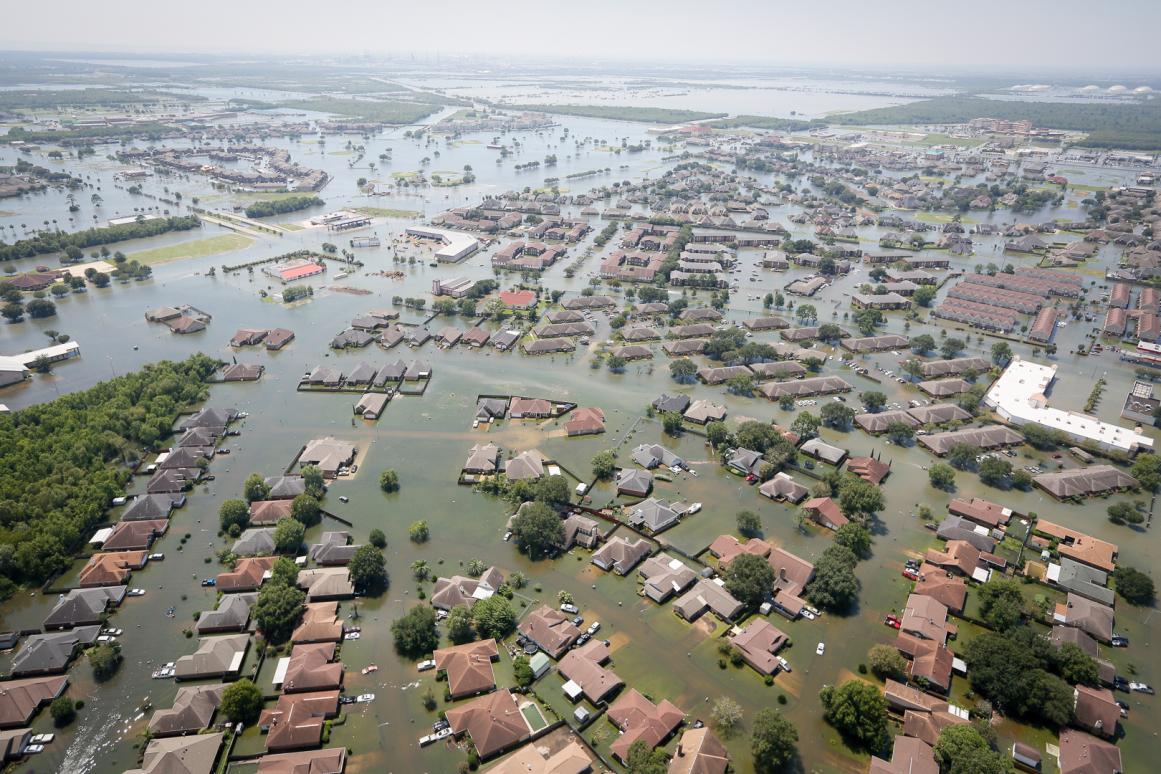Column: Recovering Better After Harvey Needs Smart Land-Use Planning

Note: An abbreviated version of this column was printed in the Sunday (Oct. 14) Austin American-Statesman.
Jaimie Masterson, Texas Target Communities & Institute for Sustainable Communities, Texas A&M University
Kateryna Wowk, Harte Research Institute for Gulf of Mexico Studies, Texas A&M University-Corpus Christi
Ashley Bennis, Texas Sea Grant College Program, Texas A&M University-Corpus Christi
Heather Wade, Texas Sea Grant College Program, Texas A&M University
Like other areas struck by disasters, just one year later, Texas communities are still fighting the complexities of recovery from Hurricane Harvey. As residents rebuild, are there safeguards to mitigate future risks? Communities are up against immense odds, facing chronic and systemic challenges in land-use regulation and hazard mitigation.
Texas is pro-business, which can lead to robust local economies. Texas cities are some of the fastest growing in the US, with Houston being the fastest growing city from 2010 to 2016, adding roughly a million people. Yet as economic prosperity grows, if we fail to also plan for known risks — flooding, hurricanes and more — we create communities that fail all Texans and increase risk to life and property. A holistic planning approach is needed that incorporates economic, environmental and human dimensions.
Texans increasingly live in complex urban environments, expanding communities that sprawl outwards and lay more concrete. This growth can be good, but it also can change drainage patterns over vast areas, causing cascading impacts to adjacent properties and entire regions. We must avoid unintended harm, and strive to better balance private property rights and public safety. The 10th Amendment grants such power to establish and enforce laws that protect public health, safety, and welfare. However, some local communities have neither the capacity nor authority to implement mitigation measures. As Texas continues to recover, federal and state officials should support locally-driven approaches to mitigating risk and guiding growth through land-use planning. Fortunately, some Texas communities are leading the way.
Texas Communities Keeping People Safe
Despite a lack of regulatory power, Texas cities and counties are advancing land-use planning to protect people and property. State leaders can learn from these communities and act so that others will not have to experience hard and unnecessary lessons. Houston, for example, known for its laissez-faire development and lack of zoning, has made strides toward mitigating hazards. Seven months after Harvey, the City Council approved a major overhaul of floodplain regulations, which now require residents build structures 2 feet above the floodplain. It is estimated that Harvey storm damage to 84 percent of homes in the floodplains could have been mitigated if these regulations had been in place.
Even rural communities are taking on land-use regulation. Within one year, from 2015-2016, Liberty County experienced five disaster declarations and over 100 days of floodwaters, with even more flooding from Hurricane Harvey. In an effort to foster smart development, the county and cities came together to develop a strategic growth plan. Cities, once fierce rivals, decided to work together to grow a county in which they “would be proud for [their] kids and grandkids to live.” So impassioned, the county judge spoke to the Texas legislature with other urban-rural fringe counties to advocate for greater land-use regulatory controls. Hurricane Harvey also flooded nearly 300 structures in the City of La Grange, which is now rethinking land-use around the Colorado River. Residents have expressed a desire to create a river park and corridor, using regulations to provide appropriate amounts of land to absorb flood impacts.
In Aransas County, where Harvey made landfall, local officials had already been working to strengthen resilience for over a decade, including the adoption of the Aransas County Multi-Jurisdictional Floodplain Management Plan, which was finalized only weeks before Harvey hit. Officials in Rockport also are considering how they can build back stronger homes and businesses by adopting FORTIFIEDTM construction standards, which have been proven to withstand extreme weather events. The city considers wetland impacts in review processes for development proposals because wetlands provide protection from floods. Rockport has further adopted several ordinances that limit development in the floodplain and increase base height elevation for future construction. These types of programs provide communities a multiple defense approach to building resilience.
A Call to Action
Despite these gains, there is more to do and others from whom we can learn. The city of Norfolk, Va. is no stranger to vulnerabilities in protecting a quarter-million residents, the Port of Virginia, and the world’s largest naval base. The city is strategically retreating from low-asset, flood-prone areas and recently created a new zoning ordinance, which requires all development meet a “resilience quotient” that measures risk reduction, stormwater management, and energy resilience. The approach ensures new development is designed with hazards and the environment in mind, while also providing flexibility for developers. In another example, Charlotte, N.C., is continuing a floodplain buyout program that has the support of developers and businesses. Since its initiation, the county has removed roughly 400 flood-prone structures, adding 185 acres of open space to allow the river to flood.
Across the country, cities are reimagining resilience, and Texas can too, by adopting smart land-use plans and regulations to mitigate hazards. The Texas legislature should grant broader regulatory authority to counties while buttressing city regulations to mitigate future disasters. Additionally, federal and state agencies should provide financial incentives to local governments and residents to get folks out of harm’s way. Texas universities, with some of the world’s foremost experts on mitigating flood risk, can assist with science and data-driven approaches to building resilience. If we align experts and programs with resources to help local communities, we can spur innovation for a resilient Texas. By doing so, Texas will not only recover, but will be emboldened to secure prosperous communities and economies through the next disaster.
